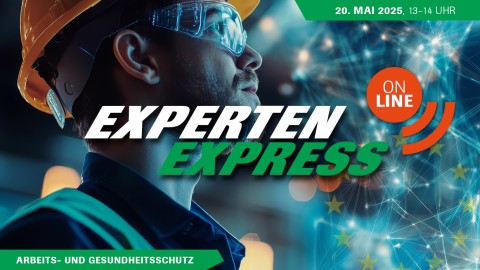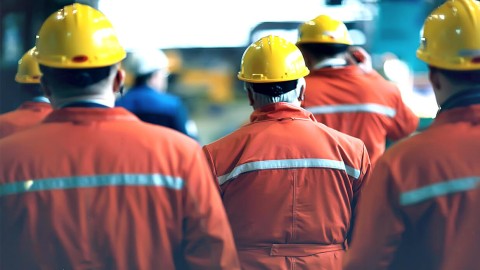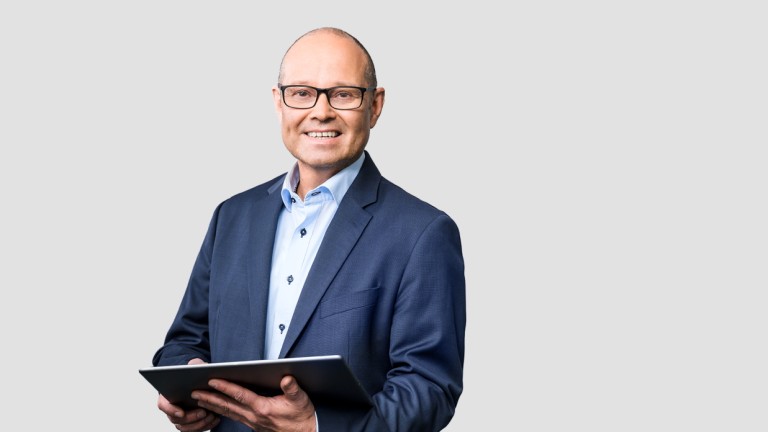The European Machinery Regulation - a complete reboot for the mechanical engineering industry?
From 20 January 2027, the new European Machinery Regulation (EU) 2023/1230 will be mandatory for placing machinery on the market in the European Economic Area. This is a further development of the European Machinery Directive 2006/42/EC, which no longer meets the requirements of today's market and modern technologies.
Read on to find out what new challenges machine manufacturers, importers and dealers need to prepare for - and how Infraserv Höchst can help them implement the new regulations.
Mechanical engineering - an export-driven industry with increasing digitalisation
The mechanical engineering manufacturing sector is not only one of the most innovative industries in Europe, but also makes a significant contribution to industrial value creation. In Germany alone, mechanical engineering companies with around one million employees generated a total turnover of 383 billion euros in 2023.
Mechanical engineering relies heavily on exports - in 2023, the export volume of German mechanical and plant engineering companies totalled 207 billion euros. The EU is the largest sales market for German mechanical engineering companies with a share of 44 per cent. However, intra-European trade has so far been hampered by legal uncertainties in the interpretation of the Machinery Directive in the countries involved.
In recent years, digitalisation and robotics have increasingly found their way into mechanical engineering. New technologies such as autonomous robots and artificial intelligence raise issues such as ensuring (cyber) safety and more comprehensive health protection concepts for employees.
EU tackles reform - for more machinery and legal certainty in simplified internal European trade
The EU Commission addressed the changed situation in European mechanical engineering, had the Machinery Directive evaluated in 2018 and identified the risk gaps that had arisen in European legislation. It became clear that the old Machinery Directive was in urgent need of revision.
When transferring the Machinery Directive 2006/42/EC into the new Machinery Regulation, the EU Commission focussed on the following aspects:
- Adaptation of the Machinery Directive to the ‘New Legislative Framework’ (NLF - concept for product conformity in the European Union) in order to achieve EU-wide harmonisation of national regulations and thus reduce barriers to trade
- Extension of the actors involved from manufacturers and their authorised representatives to importers and distributors and clarification of the respective obligations
- Consideration of the areas of digitalisation, IoT, artificial intelligence and robotics
- Consideration of the changing requirements for (cyber) safety and health protection in the digital age
- Revision and updating of Annex IV (Technical Documentation)
- Conversion of the directive into a European regulation to improve legal clarity
The overriding aim of the new Machinery Regulation is to make the regulations of the former Machinery Directive fit for the digital industrial age and to strengthen the European single market
Be prepared now: the new Machinery Ordinance will be introduced without a transition period!
Thomas Tadday, Head of the Machinery Safety, Radiation Protection and Health and Safety Coordination Department at Infraserv Höchst, emphasises that the introduction of the new Machinery Directive could be a ‘hard cut’. "Some companies are still struggling with the old Machinery Directive. But fortunately, we still have just under two years to adapt to the changes."
Tadday uses an example to show how the Machinery Directive also affects everyday life at Infraserv Höchst: "If a valve in a pipeline in gas turbine construction is driven by a motor from another manufacturer, this must be documented accordingly. At the end of the process, there must always be CE certification, which confirms that the machine in question fulfils the requirements of the Machinery Directive. Here at Industriepark Höchst, we have numerous participants from the chemical industry and process engineering who are repeatedly confronted with such situations. They then approach us with questions about engineering, for example."
Take action now so that you are ready for the deadline in January 2027!
Talk to Infraserv Höchst's experts about what your company needs to do to comply with the EU's new machinery regulation.
New Machinery Ordinance: What is changing and what is important now?
New complexity poses challenges for machine builders
‘The confusion among manufacturers starts with the multitude of possible configurations,’ explains Thomas Tadday. "The concept of “significant change”, which now also refers to the digital sector, also comes into play here. Due to the range of different production modules, the topic has actually already become too complex for the Machinery Directive and manufacturers. The EU has already issued comments on this - the explanation of the regulation, so to speak. And the Machinery Regulation is just the tip of the iceberg. There is also a whole host of standardisation to consider! It is already difficult for everyone involved to implement everything that the legislator requires in the standardisation. This will tie up even more resources and require training in the future."
‘For example, if I replace the control unit of an old machine with a more up-to-date model, this is a significant digital change that can result in a new conformity assessment procedure and even new, cost-intensive CE certification.’
Thomas Tadday also points out another problem in this context: ‘Not just anyone can approve new software as a significant change - experts from an approved testing centre have to be called in, which can be associated with long waiting times and high costs, not least due to staff overload.’
"The market supervisory authority and the employers' liability insurance associations are monitoring the implementation of the new regulations. Manufacturers who don't have their own in-house experts for the Machinery Ordinance will have a lot of work to do over the next two years."
‘Round table’ of the trades on the Machinery Ordinance
New developments are particularly evident in machines that are integrated into online infrastructures for remote control or maintenance, for example. The aim here is to prevent unauthorised interference and ‘unintentional or deliberate corruption’ from outside - a task that generally requires IT, electronics and cybersecurity expertise.
The new Machinery Directive therefore adapts the definition of machinery to include digital components as well as physical parts. This makes it difficult for machine manufacturers to carry out the conformity assessment without the involvement of IT and cybersecurity experts.
"We need mechanical engineers, IT and cybersecurity experts to work together to adequately implement the requirements of the new Machinery Ordinance. Infraserv Höchst can provide the initial spark for this."
‘At Infraserv Höchst, we have the necessary resources to bring together the experts required for a conformity assessment in accordance with the new Machinery Ordinance - from mechanical and process engineers to electrical and control engineering, IT and cybersecurity,’ says Thomas Tadday, referring to Infraserv's extensive expertise in conducting risk and hazard assessments. ‘At our own company and at Industriepark Höchst, we demonstrate every day how we can create the necessary interfaces for legally compliant conformity assessments in accordance with the new Machinery Ordinance.’
Artificial intelligence - a future with many unanswered questions
With regard to the ‘intended modification’ of machinery, the Machinery Ordinance in Annex III, Part B also refers to risks arising from the ‘fully or partially self-developing behaviour’ or the ‘fully or partially self-developing logic’ of machinery and associated products - and thus also refers to the hazards that can arise from the use of artificial intelligence in mechanical and process engineering.
‘The question of the extent to which AI applications will be able to disrupt processes in critical infrastructures, such as process engineering systems, from the outside remains unanswered - an exciting topic given the self-learning capabilities of AI.’
Thomas Tadday comments: "It is still too early to make detailed and comprehensive statements on the relevant AI-based threat scenarios. The German Social Accident Insurance (DGUV) with the Institute for Occupational Safety and Health (IFA) and the employers' liability insurance associations with their umbrella organisation (HVBG) will develop guidelines on this, for example on the certification of AI-safe software Infraserv Höchst will also significantly expand its expertise in AI in the near future."
Don't wait until the ‘cold cut’ in January 2027!
Be there when Infraserv Höchst initiates a ‘round table’ on the EU Machinery Regulation to develop practical and affordable solutions with all stakeholders!




